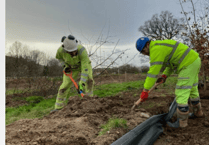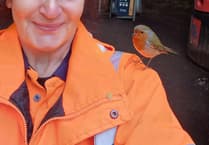ARCHAEOLOGISTS have begun excavation work on an ancient hill fort in the Teign Valley.
Wooston Castle is an Iron Age fort at Fingle Woods on Dartmoor and the excavations provide a rare chance to investigate Devon’s prehistoric past.
As a Scheduled Ancient Monument, the fort is protected and due to its fragility, they are rarely excavated.
This is the first excavation of a hill fort in the region for almost a century.
The Fingle Woods Project, run by the Woodland Trust and National Trust, is hoping to identity the age and purpose of the fort.
And there will be a chance for the public to have a look at an open day on Saturday, April 21 from 11am until 3pm with tours of the site, hands-on activities and information about the excavation finding.
Teams of horse loggers carefully extracted vast quantities of timber in order to protect the fragile archaeology that had been hidden by nearly a century of coniferous forestry planting.
Wooston is a relatively unusual hill fort as it does not sit right on the top of the hill.
However, the tree clearance has demonstrated the strategic nature of the site where a huge expanse of landscape would have been visible to the people who used it.
Bryher Mason, National Trust heritage manager for Dartmoor, said: ‘The remains of the hillfort’s banks and ditches are confusing and unconventional, leading to much speculation on the true nature of this fascinating site.
‘In 2017 Wooston hill fort was surveyed using geophysical techniques to assess the likelihood that archaeological deposits had survived the forestry activity of the 20th century.
‘The site was assessed using two techniques, magnetometry and resistivity. Magnetometry is a technique which measures and maps patterns of magnetism in the soil.
‘Ancient activity, particularly burning, leaves magnetic traces that show up even today when detected with specialist equipment.
‘We were delighted that the surveys were able to identify archaeological deposits across the site.
‘We will target areas of particular interest identified in the geophysical surveys.
‘It is an amazing opportunity to investigate a little understood hill fort structure and we are particularly keen to identify a date for the occupation of the site.
‘There is also a possibility that we might be able to identify activities which were undertaken on the site such as metalworking, crafts or animal husbandry.’




